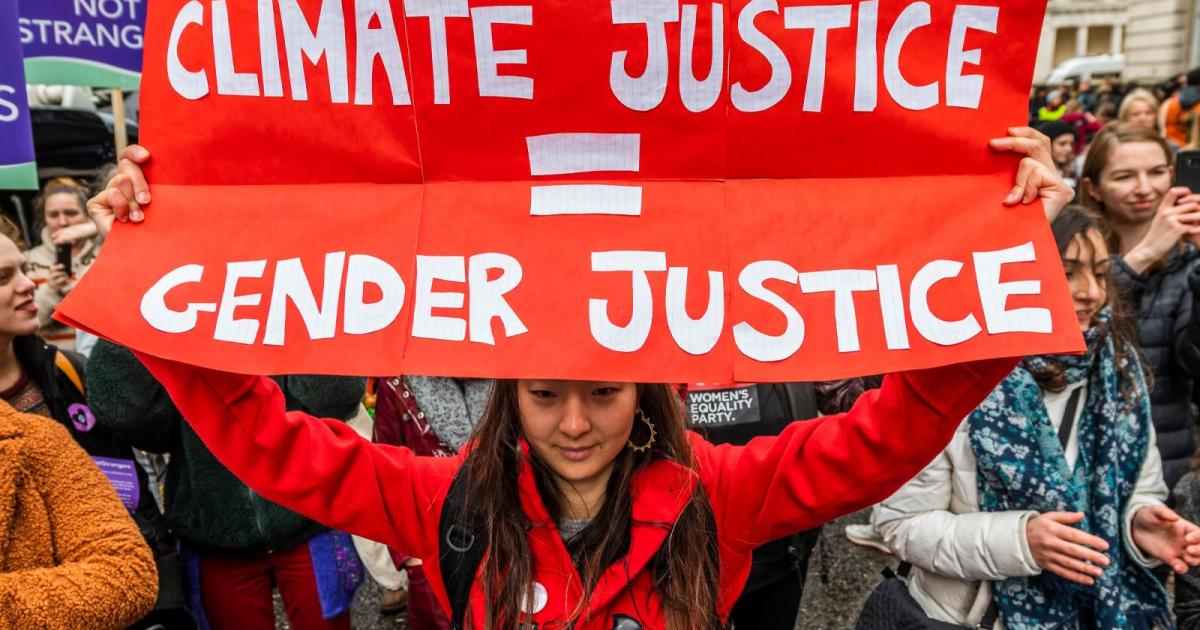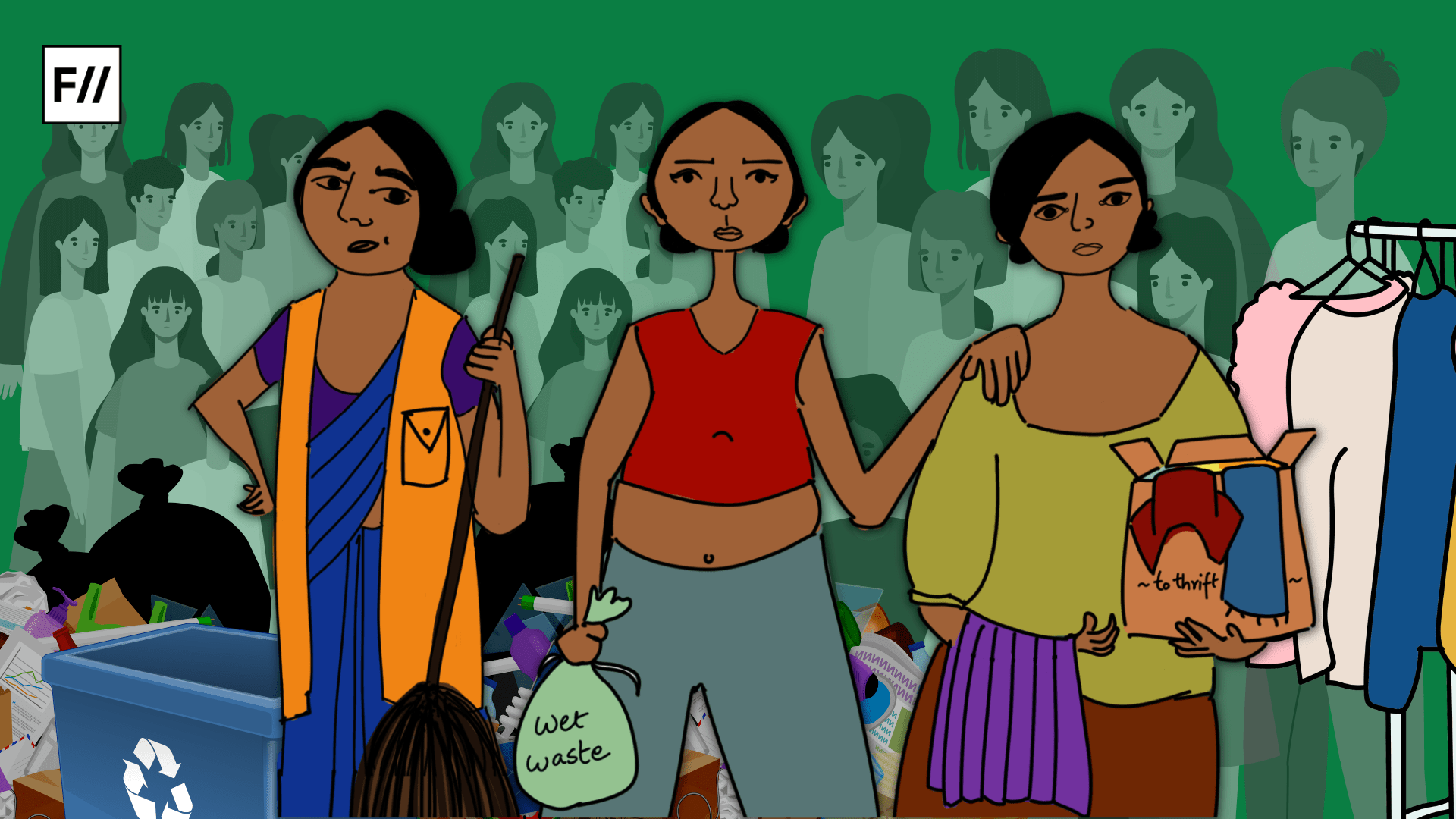Recently, while the Delhi High Court declined to allow it citing the rules of the Medical Termination of Pregnancy (MTP) Act, the Supreme Court of India allowed an unmarried woman to abort her pregnancy at 24 weeks. The court ruled that the woman can have an abortion if a medical board determines that doing so will not harm her in any way.
What is abundantly clear here is that a woman’s body is at the perusal of everyone else but her. She is not permitted to make decisions unless they are supported by a judicial or medical sanction. I am a young woman and I am scared of what the future holds for me, especially in a post-Roe v. Wade world.
Any person who is capable of having children should not have their reproductive rights restricted by a court on the grounds of principles that are unrelated to their concerns. Reproductive justice and reproductive rights are frequently used interchangeably. However, in terms of theory and actuality, the two are quite dissimilar.
Outside the mainstream reproductive rights movement, it has been recognised that there are intersecting factors like race, caste, religion, age, sexual orientation, disability, geographic location, and class that affect vulnerable women differently. Reproductive justice is a broader concept that contextualises reproductive rights by interrogating its socio-political aspects. It has emerged as its own movement and discourse. Stemming from reproductive justice is environmental justice which merits more research and discussion.

The interconnectedness between reproductive and environmental justice
When an individual, especially a woman lives in a region plagued by pollution and chronic illnesses, it has repercussions on their overall health, particularly their reproductive health. It might also negatively impact the baby’s well-being and have significant health consequences, should they give birth.
Every individual’s health is impacted by climate change, be it from extreme temperatures or pollution. Climate change is a public health emergency for future generations since these hazards are particularly greater for pregnant individuals. Reproductive justice, according to SisterSong Women of Color Reproductive Justice Collective, encompasses “the human right to parent children we have in secure and sustainable societies.” This is an important link to climate change. A fundamental human right that the climate catastrophe violates is the right to a safe environment in which to have and raise children.
The effects of climate change disproportionately affect people, especially women and girls, particularly those living in marginalised circumstances. They have lesser financial and social manoeuvrability than men, more domestic duties, little to no political say, and in many cultures, no say in family decisions, including those affecting their reproductive health and options. When women are caught in floods, droughts, cyclones, and other climate disasters, this situation gets even worse
A global and national conversation like this concerning reproductive health remains uninitiated because of the lack of understanding and the stigma associated with reproductive justice. According to a United Nations report, women and girls are displaced from their homes 80 percent of the time as a result of climate changes that cause man-made disasters that disproportionately affect them. Extreme weather events and calamities in India have rendered many people homeless and without access to energy. The crisis of climate change has also been a factor in power disruptions.
Eloor, a panchayat in peri-urban Kochi, was mentioned in an article by Mongabay as being a well-known hazardous hotspot. The Ernakulam district’s 200 factories or so along the Periyar river’s banks contaminate the air and water in the region. The effluents from these companies contaminating the river have an impact on the health of residents and workers.
Many activists claimed that the recent floods in 2018 and 2019 had washed away dangerous chemicals stored in businesses like Indian Rare Earth Limited (IRE), The Travancore Cochin Chemicals (TCC), and Hindustan Insecticides Limited (HIL), causing serious issues for both humans and animals in the area. This is just one example in the Indian context of how pollution and climate crisis affects health. If one goes to analyse, numerous such instances can be found, which remain unacknowledged to date.
How can India achieve climate justice? With a focus on finding the existing connections between climate change and sexual and reproductive health rights throughout the entire climate action process, greater gender-transformative climate action must be initiated and promoted.
Also read: Consumerism, Environmental Degradation, And Their Disproportionate Effects On Women

Disproportionate impact on individuals from low-income groups
The effects of climate change disproportionately affect people, especially women and girls, particularly those living in marginalised circumstances. They have lesser financial and social manoeuvrability than men, more domestic duties, little to no political say, and in many cultures, no say in family decisions, including those affecting their reproductive health and options. When women are caught in floods, droughts, cyclones, and other climate disasters, this situation gets even worse.
According to a recent Oxfam research, 20 million people are reportedly evicted from their homes each year as a result of climate-related calamities. Displacement—the loss of one’s home, one’s job, and one’s usual social network—often results in individuals, women, and girls of reproductive age having limited or no access to abortion and contraception services.
All pregnant individuals must have unrestricted access to healthcare services for their sexual and reproductive health as well as the ultimate right to their bodies. The world we need tomorrow has to be constructed today. Although the intersection of climate justice, sexual and reproductive rights, and gender equity may seem far-fetched, we must begin taking steps now for India’s sustainable and upward growth
Globally, there are abundant and increasing examples of how women and children are most negatively affected by extreme calamities or occurrences triggered due to climate change. Unfortunately, India’s policies do not exhibit any gender sensitivity, and this is mostly due to a lack of knowledge regarding the social and overall gender implications of climate change.
In rural India, where women typically use pieces of cloth as absorbent during their menstrual cycle, cotton pads are quickly becoming a popular menstrual hygiene product. The percentage of women aged 15 to 24 who use hygienic methods of protection during their menstrual cycle is 89.4 percent in urban areas and 72.3 percent in rural areas, according to the most recent National Family Health Survey (NFHS)-5 data — an increase from 77.3 and 57.6 percent, respectively, and as reported in NFHS-4 (2015-16).
While single-use compostable items decay in three to six months, single-use disposable pads take 800 to 900 years to do so. Cloth pads and menstruation cups are examples of reusable items that can be used repeatedly and take one to ten years to degrade after being thrown away. The access to these products, awareness, as well as social infrastructure to make use of them, remains a concern, and the climate crisis makes it even more necessary that relief and rehabilitation activities include the need of menstruating individuals.

Gender, colour, ethnicity, sexual orientation, gender identity, disability, class, and other factors intersect to produce particular dynamics and effects, leading to multiple marginalisations. Promoting intersectionality is a crucial part of advancing gender justice. Multiple forms of prejudice can be addressed using the analytical, and policy-making tool of intersectionality. It deepens knowledge of how gender interacts with other identities and how these interactions affect individuals’ perceptions of privilege and oppression. Due to their various identities, some women are marginalised and subject to severe discrimination, while others get access to more privileged positions.
When an individual’s right to control their own body’s reproduction is violated, intersectional justice explores how such inequality is manifested and directly contradicts reproductive justice. Intersectional justice views prejudice and inequality as systematic, institutional, and structural, rather than the result of personal intentions. Reproductive justice is under threat in the post-Roe v. Wade world, and this threat is also linked to environmental justice.
Creating the justice we need
We must acknowledge that reproductive health plays a crucial role in coping with, adapting to, and mitigating climate change. There is evidence that expanding an individual’s rights to choose when and if they want children can improve equity, reduce global population growth, and aid in climate mitigation.
All pregnant individuals must have unrestricted access to healthcare services for their sexual and reproductive health as well as the ultimate right to their bodies. The world we need tomorrow has to be constructed today. Although the intersection of climate justice, sexual and reproductive rights, and gender equity may seem far-fetched, we must begin taking steps now for India’s sustainable and upward growth.
This will inevitably result in better participation and contribution by women and individuals of marginalised genders across all sectors of society, directly supporting India’s commitment to inclusive growth for all genders and converting them into powerful contributors to the society and the ecosphere.
Also read: Environmental Crisis And Gender: The Effects Of Climate Change On Women’s Gynaecological Health
Nuha Bubere is a journalism major, pursuing her BA in Multimedia and Mass Communication in Mumbai. She reads, educates herself and writes on topics that resonate with her being. She finds leisure in books and a companion in coffee. She is on Instagram, LinkedIn, Twitter and Facebook
Featured Image Source: Ritika Banerjee for Feminism In India




